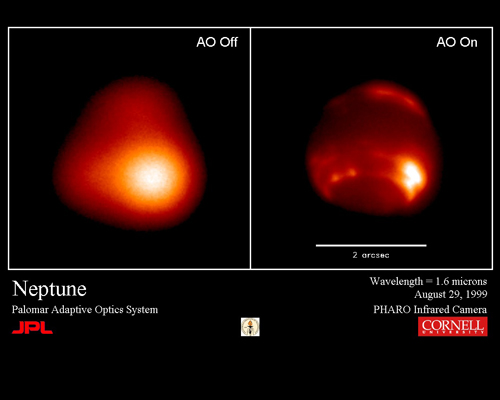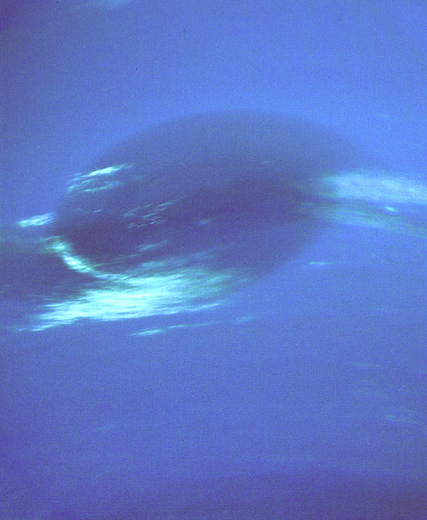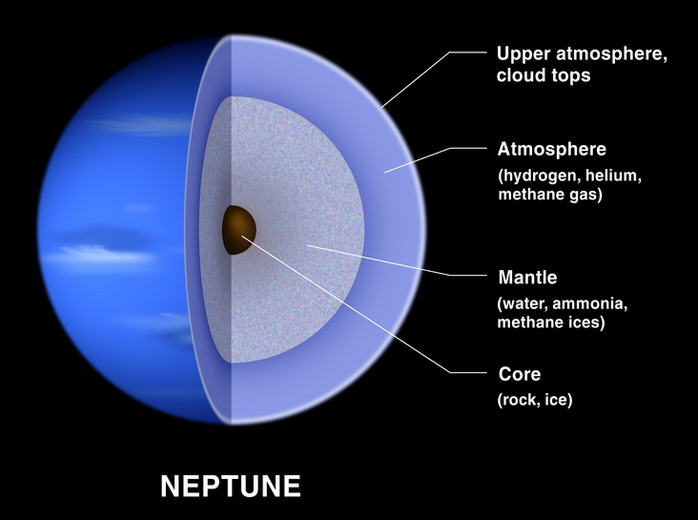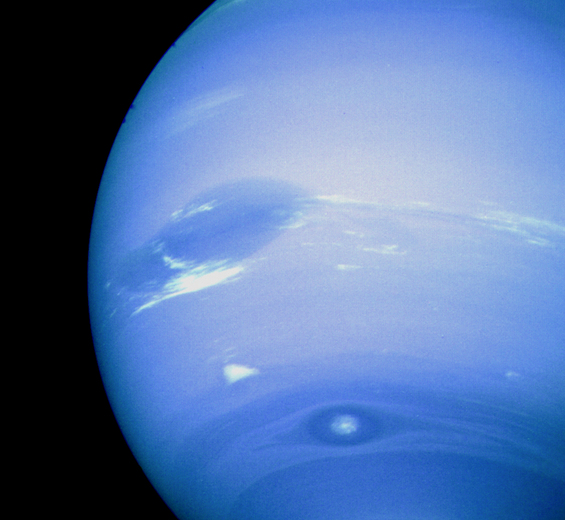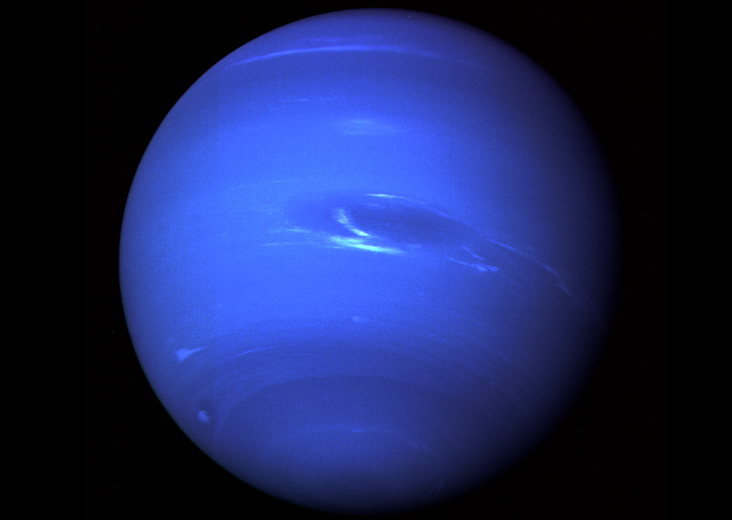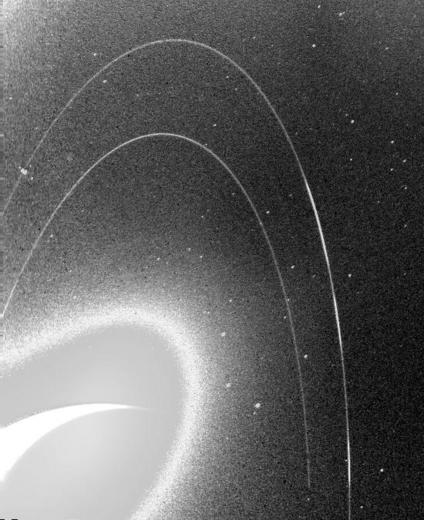Neptune, the 8th and the outer most planet in the Solar System. It was discovered by German astronomer, Johanne Galle in 1846. It is 30 times further from the Sun than Earth.
Like the rest of the so-called Gas Giants, Neptune also consists of Hydrogen(80%) and Helium(19%), along with Methane and other trace gases. It appears more blue than Uranus because there is more methane in the upper levels of the atmosphere.
It is also more stormier than Neptune because the inside of the planet is warmer. These appear near the surface as white and dark clouds. Two notable storms are the Great Dark Spot, which rotates around the planet anti-clockwise every 16 days, and the smaller and much faster "Scooter". Neptune is dubbed the windiest planet in the Solar System. Winds have been measured to up to 2000km/h!
Neptune has 8 moons. Its biggest moon, Triton, has the coldest surface in the Solar System, with temperatures as low as minus 235°C.
The best time to view Neptune is between August and October in the evenings. But like Uranus, you will need the aid of a telescope or binoculars.

